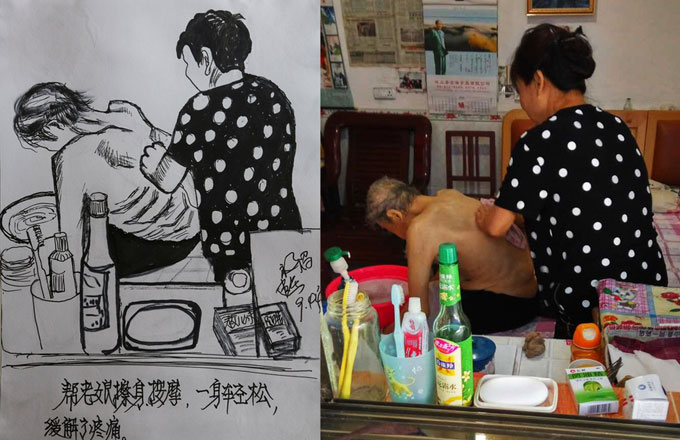'Rotten legs': a lifetime of suffering
|
Wei Hongfu, 88, first developed rotten legs in the summer of 1942. |
Trail of devastation
By mid-August 1942, the Japanese, having accomplished most of their goals and lacking the troops to guard the entire region, began to move out. They left a trail of devastation.
"Locals who had gone into hiding in the mountains returned to their homes, only to discover little black or red dots similar to Chen's, usually on their legs. What happened in the following years was a heartbreaking yet familiar story in that part of Zhejiang. The cause of their suffering was a bacteria called bacillus anthracis, or anthrax," Wang said.
"Although ulcers were seen on other parts of the body, in most cases they appeared on the legs. That's because cutaneous anthrax, where the bacteria makes a breach through an opening in the skin, constitutes the most prevalent form of anthrax infection. Imagine a farmer working barefoot in the paddy fields of southern China - it would be virtually impossible for them not to have some minor injuries on their feet or legs. That's as true today as it was 70 years ago," she added.
"Compared with victims of bubonic plague, a large number of those infected with anthrax survived, only to live in an ever-worsening nightmare, that followed many of them into their graves, many years after the war. It's a nightmare for which no explanation has been offered, at least until very recently."
Eight years into her investigation, she took three internationally renowned scholars from the US to her hometown in Zhejiang: Sheldon Harris, author of Factories of Death, the definitive book about the activities of Unit 731; Michael Franzblau, professor of dermatology and medical ethics; and Martin Furmanski, a medical scientist of pathology and expert on the prevention of biological warfare.



















